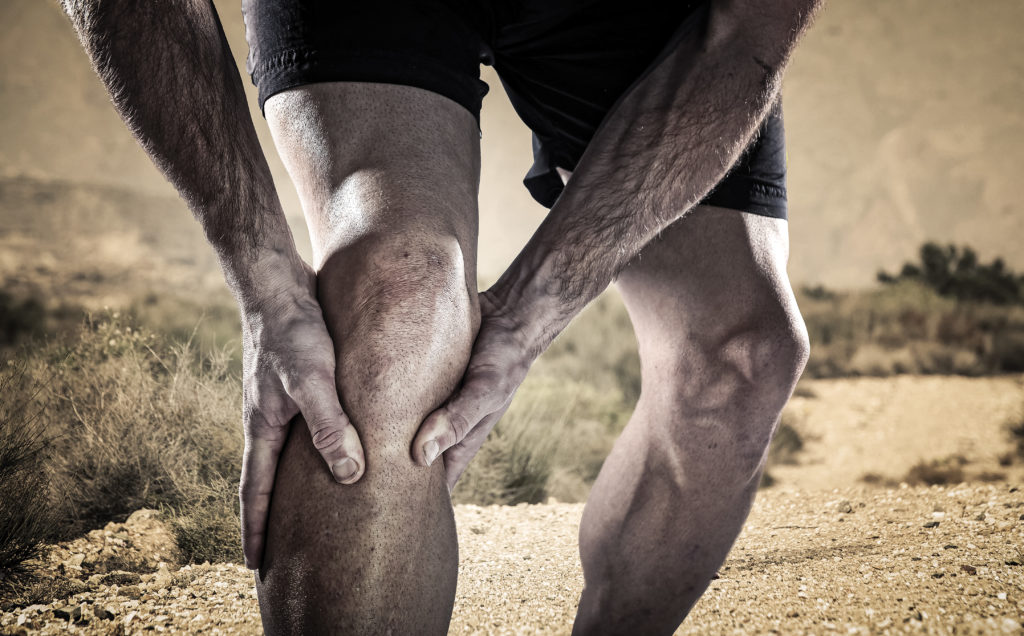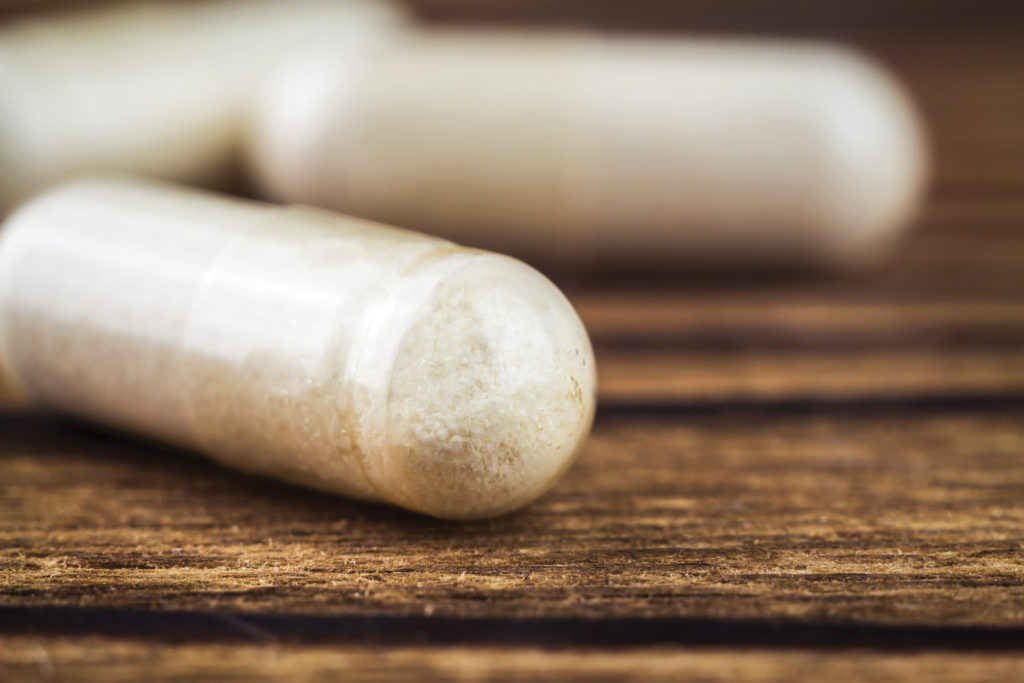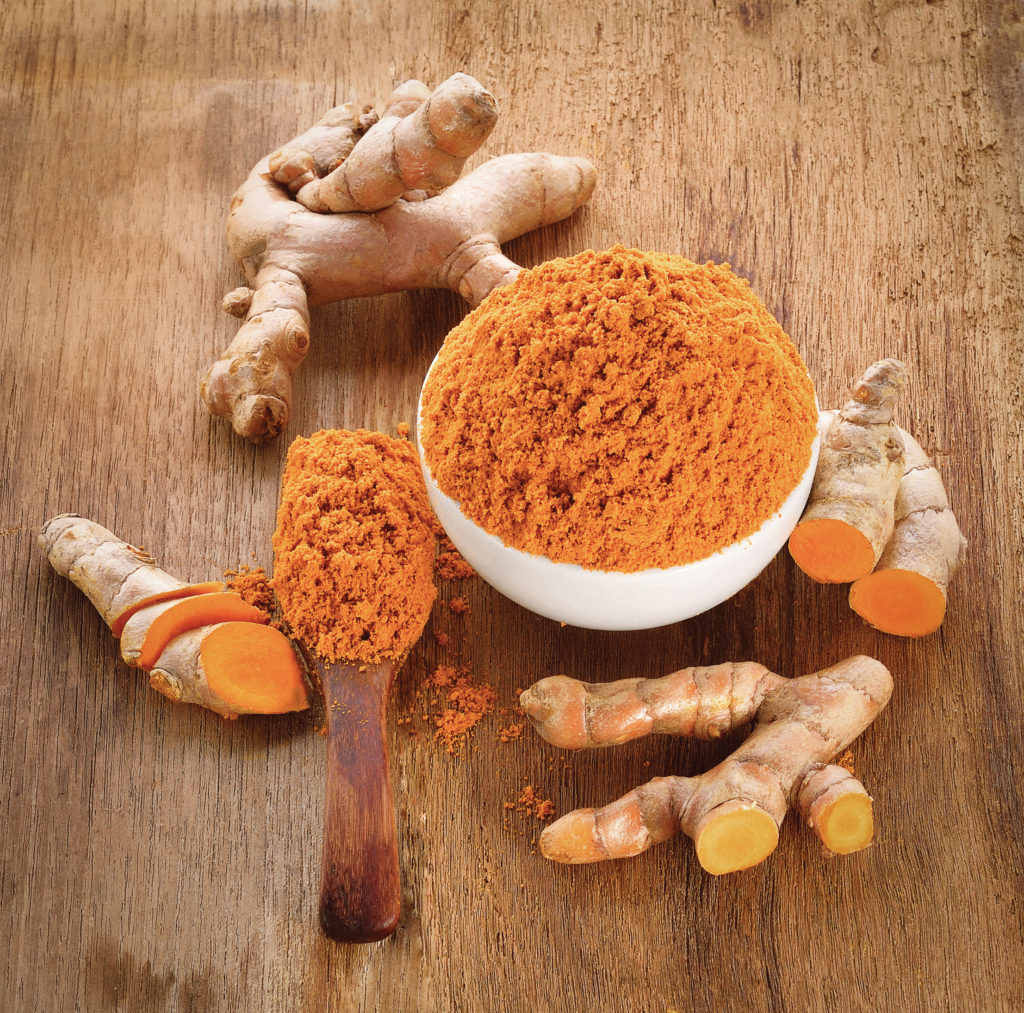

Nothing kills a workout faster than joint pain. Use these supplements to keep yourself feeling good in the gym.
By George L. Redmon, PhD, ND
PQ: In a recent study conducted at the University of Arizona, researchers discovered that curcuminoids were more effective at preventing joint inflammation when administered before a workout.
“To bring about real correction of an existing disorder is to uproot and eliminate its cause. However, where this can’t be done in its entirely, make such adjustments and modifications that will still promote healing and repair.”
Dr. Max Warmbrand, ND, DO

These words by Dr. Max Warmbrand, an early pioneer of natural medicine, imply that if you have a deteriorating or chronic joint problem, the best way to co-exist is to make sure what you are doing to relieve the discomfort also promotes healing. Normally, the smooth lining of the joint and a lubricant called synovial fluid cushions joints preventing bones from rubbing together. However, joint health tends to deteriorate with age as a result of normal wear and tear, as the protective membranes and fluids in them begins to dry up over time.
If this condition occurs as a result of normal wear and tear, what impact does resistance training have on accelerating joint deterioration? More importantly, what can be done to avoid this deterioration and help hasten joint repair?
These questions pose some serious problems as sports medicine researchers contend that the severity of joint damage many athletes deal with can be directly linked to hardcore training in the gym. In fact, according to sports medicine guru Will Brink, arthritis is the most common joint problem that weightlifting athletes encounter.
Natural Joint Repair
Jeff S. Volek, PhD, the well-known sports nutritionist at the University of Connecticut, states that whether you experience joint pain or not, it is wise to address the nutritional needs of cartilage and ligaments. He also maintains that that drug treatment of painful arthritic joints are aimed primarily at alleviating symptoms but do little to correct the underlying cause. Those treatments include taking non-steroidal anti-inflammatory drugs (NSAIDs) and cortisone injections, and may have serious adverse effects associated with long-term use. In contrast, we will look at a growing list of natural dietary supplements that have shown the ability to not only reduce joint pain and inflammation, but improve the structural aspects of the joint, as well as promote healing and repair.
Boswellia Serrata: Boswellia is a plant that originates from India that contain anti-inflammatory compounds called boswellic acids. Boswellic acids have been shown to reduce inflammation in similar fashion as NSAIDs, but without the side effects. Many clinical trials have shown that boswellic acids help maintain joint health and flexibility. For example, researchers at the Institut Pasteur de Lille in France reported that Boswellia significantly reduced the activity of a pro-inflammatory transcription factor referred to as nuclear factor kappa B (NF-κB). This transcription factor (a protein that binds to specific DNA sequences, which control the rate of transcription of genetic information from DNA to messenger RNA) increases the activity or signals transmitted by joint-destructive proteins called cytokines. Additionally, Boswellia also down-regulates several genes researchers have labeled chemically as MCP-1, MCP-3, IL-1α, MIP-2, VEGF, and TF, which also initiate this inflammatory assault on the joints. According to researchers at the University of Glasgow in the UK, an imbalance between pro- and anti-inflammatory cytokine activities causes the initiation of autoimmune diseases, chronic inflammation, and joint damage.
Suggested Dose: 300 milligrams, three times a day
Chondroitin Sulfate: Chondroitin sulfate (CS) consists of repeating chains of molecules called mucopolysaccharides, which are gel-like substances found in joints. Chondroitin is a major constituent of cartilage, providing structure, attracts water and nutrients to the cartilage, and prevents the production of rogue enzymes that break down cartilage. Besides lubricating joints, chondroitin also stimulates the production of proteins called proteoglycans (large water-binding molecules) and glycomasaminoglycans, or GAGs (proteins in cartilage that bind the water in the cartilage). Incidentally, glycomasaminoglycans are the molecules that serve as building blocks for healthy new cartilage. Furthermore, loss of chondroitin sulfate from cartilage is a major cause of osteoarthritis. To this point, researchers at the Department of Rheumatology of the Pitie-Salpetriere Hospital in Paris, France, performed a randomized double-blind study of 127 patients suffering from osteoarthritis of the knee. Each patient received 1,200 milligrams of chondroitin sulfate daily for three months, with study results conclusively showing that it improved overall symptoms and joint mobility. Additionally, researchers at the Universitat Autònoma de Barcelona, in Spain, reported that pain relief after chondroitin sulfate treatment steadily increased between four and 12 weeks of treatment, whereas the time span of pain relief after treatment with NSAIDs decreased. (NSAIDs actually reduce the activity of endorphins, body chemicals that serve as the body’s natural pain relievers.)
Suggested Dose: 1,200 milligrams, once daily
Glucosamine Sulfate: Like chondroitin sulfate, glucosamine is a major constituent found in the joint matrix. In fact, it is one of the principal substrates used in the biosynthesis of macromolecules that form articular cartilage (cartilage covering the surfaces of the bones), such as glycosaminoglycans, proteoglycans, and hyaluronic acid. Overall, glucosamine sulfate’s main function is to accelerate the production of connective tissue, the super fiber network that holds your joints together. For this reason, being the primary component of this network and playing a key role in the makeup of synovial fluid, strengthening cartilage, and aiding glycosaminoglycan synthesis is why glucosamine production and supplementation is critical to the maintenance of good joint health.
Unfortunately, as aging occurs we are unable to produce and maintain adequate levels, and as levels drop, cartilage loses its ability to hold water, thus causing friction between the joints. This declining production of glucosamine sulfate in practical terms could be compared to blowing out the shock absorbers on your car.
Suggested Dose: 1,500 milligrams, once daily

Turmeric: This is a plant native to South India and Indonesia. It has been used for centuries in Ayurveda medicine of India, as a treatment for inflammatory disorders, including arthritis. Much of its healing benefits are attributed to the active ingredient curcumin. What’s interesting about this compound and its impact on joint health is its ability to turn off or inhibit the activity of various inflammatory pathways and chemicals. For instance, in a study appearing in the journal Arthritis & Rheumatism, scientists reported that turmeric prevented local activation of NF-kappa B and the subsequent expression of NF-kappa B–regulated genes, essentially blocking joint inflammation and destruction. These researchers also found that turmeric down-regulates the activity of chemokines. Chemokines are small proteins made by cells in the immune system that unfortunately turn up inflammatory signals and cyclooxygenase 2 (COX-2). Cyclooxygenase 2 is an enzyme that acts to speed up the production of certain chemical messengers called prostaglandins that play a key role in promoting inflammation.

Overall, these scientists concluded that turmeric prevents the influx of inflammatory chemicals and joint levels of prostaglandin (E2), a major player in the manifestation of inflammation, as well as an inflammatory compound called RANKL, a member of the tumor necrosis factor cytokine family. This factor has been implicated in a variety of degenerative bone diseases, such as rheumatoid and psoriatic arthritis (inflammation of the skin and joints). Interestingly, in a recent study conducted at the University of Arizona, researchers discovered that curcuminoids were more effective at preventing joint inflammation when administered before a workout versus its use after the onset of joint inflammation.
Suggested Dose- 1,200 to 1,800 milligrams a day
Un-Denatured Type II Collagen (UC-II): This protein was discovered by researchers at the University of Nebraska who found that chicken-derived type II collagen modifies the immune system, inhibiting it from attacking proteins found in healthy joint cartilage. The initial pilot study of subjects with severe joint pain, who took 10 milligrams a day UC-II for 42 days, resulted in significant reductions in joint pain, swelling, and function of affected joints. In a recent collaborative study by Canadian researchers and investigators from the University of Houston, University of Connecticut, and the University of California, the safety and effectiveness of UC-II as compared to a combination of glucosamine and chondroitin (G+C) in the treatment of osteoarthritis of the knee was conducted. In this randomized, double-blind trial involving 52 subjects, 40 milligrams of UC-II was more than twice as effective in promoting joint health as compared to 1,500 milligrams of glucosamine and 1,200 milligrams of chondroitin.
Furthermore, in a new study recently presented in the Journal of the International Society of Sports Nutrition, researchers looking at the effectiveness of UC-II on individuals with no joint difficulties found that 40 milligrams of UC-II extended exercise tolerance without pain following strenuous workouts.
Suggested Dose: 40 milligrams, once daily
While the goal of any resistance-training individual, athlete, or fitness enthusiast is multi-faceted, it’s important to remember that you are putting an undue amount of continuous stress on your joints. As your ability and workload capacity increases, it’s important to realize that these milestones demand a defined action-plan geared toward joint preservation, one that counters the additional wear and tear of your joints’ experience. IM






















You must be logged in to post a comment Login